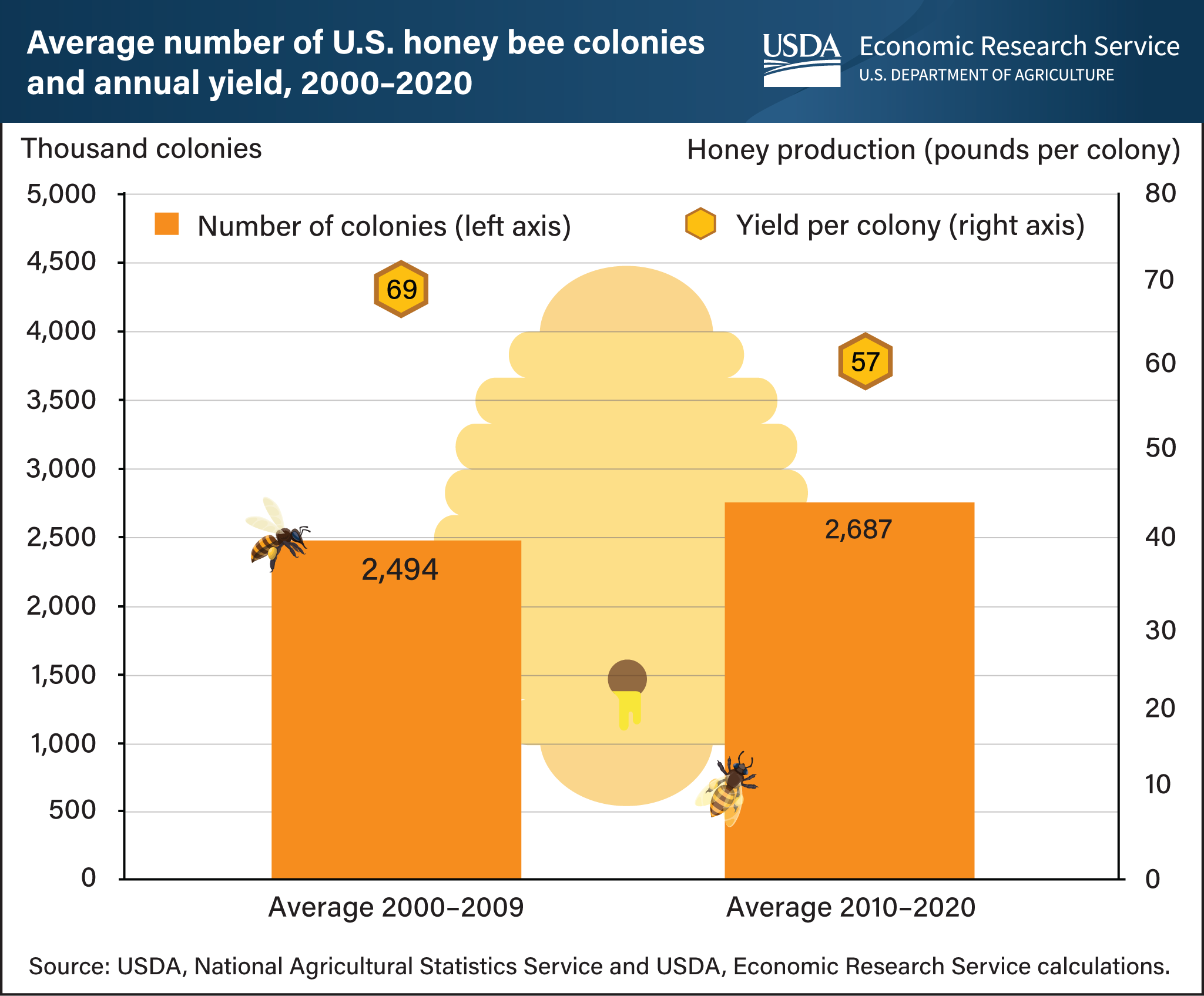Number of U.S. honey bee colonies rises as honey yield per colony drops
- by Jennifer K. Bond, Andrew Sowell and Ronald Lord
- 9/7/2021

Over the last 20 years, the U.S. beekeeping industry has experienced significant changes that have included fluctuating honey bee colony numbers coupled with per colony honey yield declines. Through 2008, bee disease and elevated overwinter losses contributed to declining colony counts. In 2008, U.S. honey bee colonies totaled 2.3 million, the lowest on record. Reflecting the trend of retraction for much of the decade, the average number of U.S. colonies through the first 10 years of the 2000s totaled 2.49 million. As beekeepers adapted to bee disease challenges and overwinter losses lessened, the number of colonies began to steadily recover. The average number of colonies in the most recent decade was 2.7 million – nearly 8 percent more than in the prior 10 years. Even though colony numbers have largely recovered in the last decade, per colony honey yields have declined at a rate of about half a pound per year. From 2000 to 2009, the average U.S. colony produced 69 pounds of honey. In the most recent decade, that average slipped to 57 pounds. In addition to producing honey, honey bees provide pollination services, the demand for which has surged over the last 20 years. USDA’s Economic Research Service (ERS) recently reported that beekeepers now receive about as much of their income from providing pollination services as from producing honey. This chart is drawn from the ERS Sugar and Sweeteners Outlook, June 2021.


